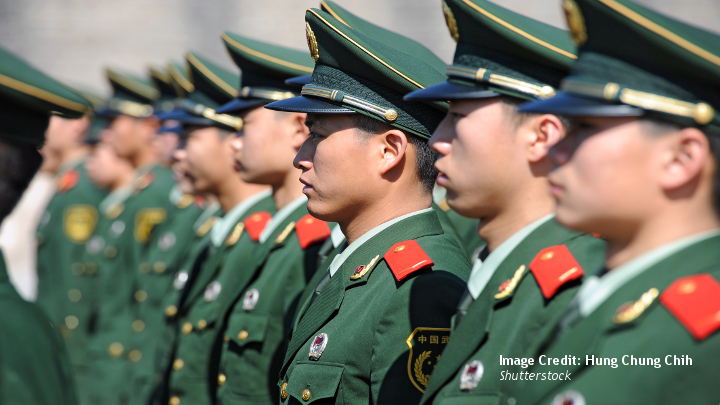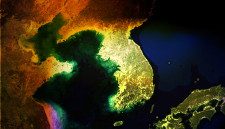A Critique of the Focus Asia: Perspective and Analysis “China Military Reform: Present and Future, Parts 1 and 2.”

Roy Kamphausen
The following is a critique of the publication – Focus Asia: Perspective and Analysis “China Military Reform: Present and Future, Parts 1 and 2 (hereafter, the Report).” The Report offers important insights about the motivations of the Chinese military reform that began in 2015, in particular focusing on domestic drivers and insights. The Report serves as an essential reference document for observers of China’s military reform and modernization initiatives. However, it also leaves a lot of unanswered questions and offers incomplete responses to the issues it asserts to be covering. This critique reviews each section of the Report to draw attention to its key observations and in the process offers some answers to those unanswered questions. The critique then goes on to suggest additional topics that the Report might have usefully addressed.
This critique concludes that readers should not take at face value the Report’s assertions that China’s military reforms are driven mostly by domestic motivations. Insofar as there is any outside-of-China motivation for the reforms, the Report argues that China’s reforms seek to present a model for militaries worldwide as to how to reform in systematic and scientific ways. These arguments strain credulity, however. Fundamentally, countries generally reform so that their militaries are better able to accomplish national defense missions, including fighting their countries’ wars. This type of perspective helps observers to understand the kinds of military missions that the PLA might be able to accomplish, should the reforms be successful.
Each part of the Report begins with the statement “China’s military reform has attracted worldwide attention.” The author has that exactly right, and this critique seeks to augment his analysis so that worldwide attention can be even more well-informed.
Highlights of the Report
Part 1 Critique
Part 1 of the Report highlights several elements. First, the Report discusses the sequences of the reforms, in the process highlighting the central role of Communist Party General Secretary/State President/Central Military Commission Chairman Xi Jinping, in leading the process and noting that the reform process really began with his ascension to power in 2012. The Report unravels Xi’s specific contributions to reform in great detail; A very point in the reform platform was the September 03, 2015 announcement of the demobilization of 300,000 troops. Then from November 24-26, 2015, Xi led a reform conference in which he gave a speech to highlight the timeline for measuring reforms. On December 31, 2015, the PLA Army, Rocket Force and Strategic Support Force were established as service headquarters, again by order of Xi Jinping. On February 01, 2016, Xi announced the establishment of the five new theaters of operation. On December 03, 2016 the Central Military Commission (CMC) announced the transformation of 18 army groups (corps) into 13 army groups. These details, while essential to a grounded understanding of the reforms, are, however, not sufficient to a full understanding of what they mean.
The prominent, indeed central, role accorded to Chinese Communist Party (CCP) leader Xi Jinping as “general secretary and core” serves to underscore the essential political essence of the reforms. Xi’s centrality conveys both to the PLA and broader Chinese society that the restructuring has the highest possible CCP political support, should there be opposition, even within the PLA itself. More fundamentally, the identification of the top Party and government leader with the establishment of the reforms stresses the tenet that the “Party controls the gun.”
Secondly, while it is laudable that the Report asks the question “why reform?” the essay hardly answers the question. The author argues that the reasoning behind the reforms are primarily of domestic origin, stating that the PLA had “structural contradictions” which impeded a move toward greater ability to conduct joint operations. The failures are then blamed upon policies and structures, making no mention as to why those policies and structures were in place to begin with. Moreover, the Report does not address what conditions have changed allowing for restructuring to occur now.
Similarly, the author asks why the four general departments, styled on the Soviet General Staff system, were disbanded. The author’s answer essentially states that the existing structure was just not working. However, this is insufficient to explain such a move. Immediately, informed readers wonder whether the restructuring is not just another tool in the Party’s broad anti-corruption campaign. At the operational level, however, the disestablishment of the departments, and creation of a Joint Staff department, generally serve to create the conditions for a more outwardly oriented PLA, to be discussed in more depth later.
Why the former Second Artillery was turned into the PLA Rocket Force, a service level organization, is more obvious. The strategic forces, in command of the PLA’s missiles both conventional and nuclear, have long been under the direct command of the Central Military Commission, so the move does not change much in this regard.
Perhaps most significantly, the author asks why a Strategic Support Force (SSF) was made a new service. This is an apt question, especially as the author argues that such a unit is “unheard of” around the world. Indeed, the missions performed by the SSF include the critical new domains in “informationalized” 21st century warfare: space operations; cyber; electronic warfare and signals intelligence, among others.
The author also asks why the Army changed the most, and the answer here is pretty direct and straightforward: the nature of warfare has changed, and ground dominance must be replaced by coordinated joint operations in air, sea, space, and cyber. Dealing with “Big Army syndrome” thus is an essential task of the reform process. Even so, the Army still retains nearly 50 percent of all PLA soldiers and three of five commanders of the new theater commands are Army officers.
Part 2 Critique
In Part 2, the author dedicates some space to deconstruct what two Western (American) specialists have said about the reforms. This section is not at all comprehensive, and there are other reviews which are more systematic, for example a 2017 publication from the U.S. National Defense University. In any case, a report intended to elucidate Chinese intentions which spends time reviewing what outsiders have had to say misses an opportunity to add clarity or insight.
The author then embarks on a most peculiar section. He argues that reforms need to be undertaken primarily for efficiency’s sake, because most countries, other than the U.S., are unable to test their reforms through war fighting. He argues that “military reform is an activity and process conducted by the top military leaders and the leading bodies for the reconstruction of military force system, reconstruction of military organization, remodeling of leadership and command relationship, streamlining of organizational structures, and improvement of policy and system, the purpose is to change the past deficiencies and defects, make its military power towards better.” That the author argues for the ideal of seeking greater efficiency through fundamental reforms – rather than ensuring that China’s military is more effective at its primary national defense missions as a consequence of the reforms. This thinking is akin to a sports team wanting to improve its statistics rather than measuring performance by whether it actually wins matches.
The section’s criticisms of the U.S. are several, including that the U.S. fights wars, and thus does appear not to be advancing the art of military reform, at least in its peacetime version. Moreover, the unusual mention of Qian Xuesen, considered the father of modern Chinese missilery, is an example of an oblique critical reference to the U.S. which does not add much to understanding of the reforms. Indeed, the effect achieved by mentioning Qian is quite the opposite of the author’s apparent intent. While citing Qian’s contributions to the field of system science, the Report overlooks that Qian is best known for helping to create China’s short and medium range missile arsenal – unconstrained by multilateral arms control agreements – an arsenal which is existentially threatening to China’s neighbors. Here again, the Report places emphasis on the process of the reforms (system science) without considering their potentially coercive effects on neighbors.
Moreover, the Report makes the case that the PLA is creating a model for the development of military theory worldwide. This is perhaps an argument for PLA leadership in the developing world. While national defense leaders in developing countries can and should study the process of military reform, the reforms certainly don’t exist in a vacuum. Reform is intended to accomplish something, namely, to enable militaries to accomplish their national defense missions, which include the ability to conduct more lethal and victorious military operations.
Finally, the Report offers some thoughts on the way forward. He notes, without fanfare, the goals declared by Xi Jinping that the PLA would become fully modernized by 2035, and then become a world class military by mid-century, at the 100th anniversary of the founding of the People’s Republic. The Report spends some time explaining the concepts of “mechanization” and “informatization”, but these are largely accomplished already, and not key elements of a way forward.
He then spends precious little time on the modernization of military personnel and weapons and equipment, topics of keen interest to foreign observers. Structural reforms of the types instituted by the PLA starting in 2015 create the conditions for enhanced training of personnel, integration of new weapons and equipment, and organization of new units. The Report would have benefited from spending some time discussing the effects of structural reforms on the people in the PLA, their weapons, and their units.
Finally, the author argues what all this reform will not lead to – the development of a PLA that is a hegemon and pursues war to achieve national aims. “No matter how powerful the PLA will be in the future, it will not become a tool of war to dominate the world.” Here, the Report’s argumentation suffers from its dependence on China’s “century of humiliation” national discourse. Because China suffered at the hands of other hegemons, it would never inflict the same pain on others when the PRC is itself powerful. But this argument misses the fundamental point that countries go to war to achieve national interests.
The Questions We Want Answered
If it is the case that Chinese military reform has garnered “worldwide attention”, it is quite likely that the world has different questions than those addressed in the Report. Here are several:
How does China plan to employ its newly restructured force?
Assuming that someone in China’s military strategy hierarchy considers the question – the Academy of Military Science where the Report’s author is employed is certainly the leading organization accomplishing that function in China – how do strategists conceive of employing the air, naval, ground, space and cyber forces that are organized within the new structure? The PLA’s previous longstanding military region structure was very much focused on national construction, internal defense and civil military tasks such as recruitment, accession, and demobilization.
The national defense missions assigned to the military regions were those presented by the security challenges directly opposite the MRs, but the plans to address the threats were limited by short power projection range of the capabilities within the MRs. The new structure suggests that thinking has fundamentally changed in the orientation of the PLA with the establishment of the five theater commands. What has changed: An assessment of the strategic environment, a reevaluation of the “strategic window of opportunity” for China’s development, or a calculation that the PLA is now suited for ambitious missions?
What does it mean that the five theaters of operation are now organized along lines of major strategic direction?
The theater commands are now organized each to a major external challenge that China faces: Northern – Korea; Southern – South China Sea; Eastern – Taiwan; Southern – India/Tibet: and Western – Central Asia/Terrorism. This is a crystal-clear assignment of mission to military structure, the sort of clarity sought by military commanders as they develop plans, field new weapons and equipment, and organize training. Beijing’s principal interest is to ensure that these external challenges do not affect (or threaten) China, and thus the theaters of operation represent a fundamentally defensive orientation. But the PLA high command in China’s Central Military Commission also understands that dealing with external challenges sometimes means that military power must project itself to where the threat lies, and not just remain within Chinese borders. The days of Mao’s dictum to “lure them in deep” are long past. Indeed, China has long since gotten over its self-declared aversion to deploying troops outside of China. The establishment of the TO’s is in effect a public declaration to that effect that the Chinese military will act in the national defense outside of China’s borders.
What are the exceptions to China’s explicit statements that it will never cause war?
There is much to parse in the Report’s assertion that China will not fight wars. This seeming all-inclusive statement is just not credible without a full understanding of the unstated exceptions. One could imagine that at least encroachment on Chinese sovereignty, either real (border incursions of Chinese territory in the Northeast or Southwest) or contested (Taiwan) are casus belli. Would economic strangulation bordering on embargo constitute the same? Would a contemporary version of the historic use of the logic “preemptive counterattack in self-defense”, as in the case of Vietnam in 1979, resurface? In short, what are the circumstances in which war is justified in Chinese strategic minds? Surely there are circumstances where China would be justified in using military force, at least in domestic political opinion, if not international laws of war. To claim categorically otherwise is to discredit a blanket assertion. Or perhaps, the Report’s author may judge that China can confront without leading to conflict – so-called “gray zone” operations – and can master escalation control such that national security goals are achieved without actual combat operations being waged.
Why has China undertaken reform at this period in history?
A somewhat superficial answer from the Report is that the reforms were long overdue. But the reforms were as overdue in 2012 as in 2019. As with most of the other elements of China’s military modernization, Beijing has the luxury of choosing the timing and content of its decisions because China faces no existential military threat. Following this logic, the decision was made now because it could be made, without impact on other goals.
Conclusion
The Report argues that China has made its military reforms so to contribute to the body of global knowledge and experience in the field of military reform. This argument does not pass the common sense test. Militaries reform so that they can get better at performing their national defense missions, including fighting their countries’ wars. All other measures of success are much less consequential. In this respect, the Report falls short in illuminating Chinese strategic intent in ways that would be transparent and reassure neighboring states and potential competitors. Indeed, the relative absence of transparency about Chinese intent actually serves to raise suspicions more than to reassure.
However, the Report does shed light in one important area. It is clear that the process of military reform is essentially a political act in China, as highlighted by the central role accorded to Xi Jinping as Party Secretary and CMC Chair. Even after fundamental structural reforms, the Party still controls the gun in China.
Related Publications
-
China as a Mediator in North Korea: Facilitating Dialogues or Mediating Conflicts?
China has arguably emerged as a major power militarily, politically, and economically, extending its influence globally and within its immediate region. This influence has been increasingly asserted, as seen in […]
-
The Political Split at the Heart of Taiwan’s Struggle against Foreign Disinformation
Taiwan’s struggle against foreign disinformation and concerns about China’s impact on its 2024 election has received much international attention recently. This issue brief examines the domestic and international politics behind […]

